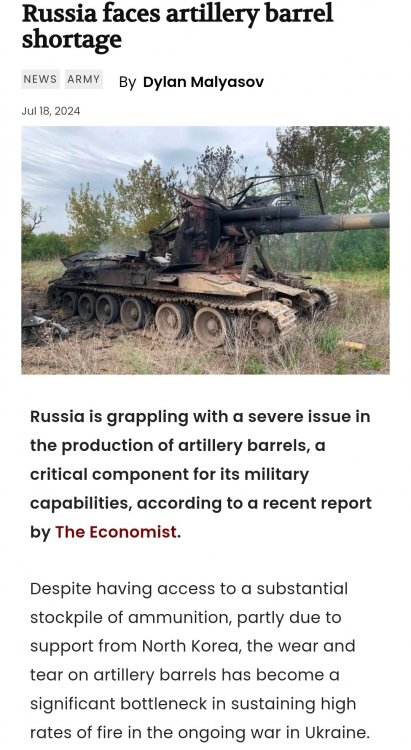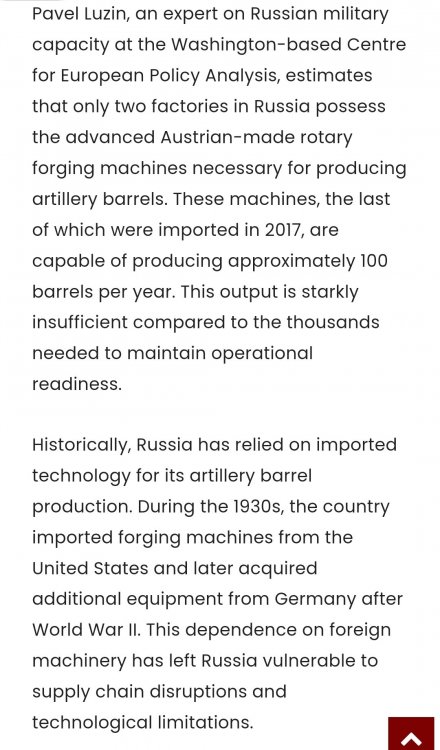beware the implicit false dilemma in your argument - the assumptions that sanctions by themselves accomplish policy objectives. Sanctions rarely force decisive outcomes. That's not their intent. Sanctions complicate things for the country sanctioned. They increase the costs of things. They force reallocations of resources that create limitations elsewhere. They reduce a country's ability to field troops & weapons at full capacity.Redbrickbear said:trey3216 said:I was told on here that sanctions aren't working....Redbrickbear said:trey3216 said:
https://defence-blog.com/russia-faces-artillery-barrel-shortage/
The mighty Russian military menace that we must all be scared of and who might run wild on Poland at any moment.
(*yet they rely on just 2 machines- made in Austria- for their critical artillery components
And apparently Moscow has been relying on imported machine tech since the 1930s...first from the USA and then from post war German? lol)
Guys this just proves we need to spend another 100 trillion dollars on European defense...
Sounds like they have structural problems that existed 80 years before the sanctions started....and have never been the massive military threat they have been made out to be.
(*And people on here are just reporting what the Media says....our own Western align Media saying the sanctions have not worked on consumer goods because they can just import in cheap knock off stuff from China into their malls and shops and keep going....but do work on the military hardware since they can get it from the West-like Austria in this case)
https://www.brookings.edu/events/sanctions-on-russia-whats-working-whats-not/
1.5 long talk about sanctions for a source you would not dismiss....sounds like a mixed bag of success and non success
Daleep Singh, Deputy Direct National Security advisor on International economics- "We were initially trying to induce as much Capital flight as possible, in our initial polices on Feb 26 we were trying to engineer a free fall in the ruble. That would case inflation to spike, which would crush purchasing power of Russian consumers, and cause the Central Bank to raise interest rates to emergency levels and drive away investment and then create a negative feedback loop...he [Putin] arrested that with Capital controls. Can you over come those Capital controls and return Russia to that vicious feedback loop? If you can that would be something to look into but I am doubtful that you can in the Russian economy as currently built"
Saying that Russia can still produce arty barrels despite sanctions, so sanctions aren't working drastically misses the point. Sanctions have SEVERELY limited Russian ability to product arty barrels, which of course has significantly affected the accuracy of their fires, and increasingly so over time. Without sanctions, Russia could simply buy all the equipment it needed to make all the barrels it needed. Sanctions increase the cost of field artillery, which limits the production of field artillery, just as surely as the bombing of arty factories would. In fact, sanctions are arguably MORE effective. Without sanctions, Russia could simply rebuild a bombed out arty barrel plant. But with sanctions, Russia has severe limitations on restoring or increasing any arty barrel production at all.
Meanwhile, Ukraine is being delivered ever more capable new arty equipment.........








